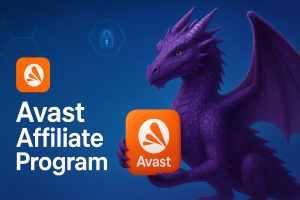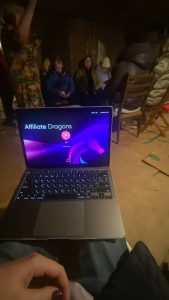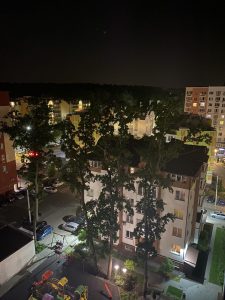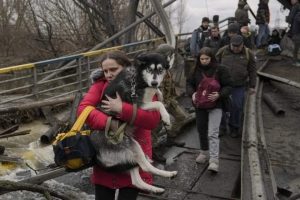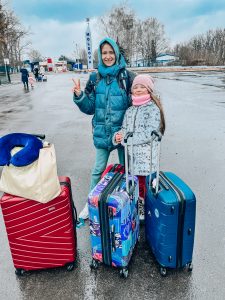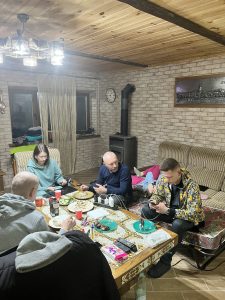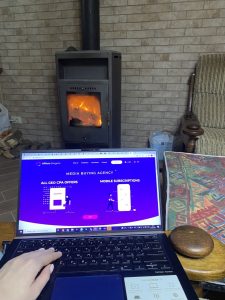Mobile Value-Added Services (MVAS) are supplementary mobile communication services provided beyond basic voice and SMS offerings. Most often, these are paid subscription services that allow users to access content and services on mobile devices. MVAS subscriptions span a wide range of offerings—from entertainment and news to education and healthcare—and are becoming an increasingly significant revenue stream for both operators and content providers.
Below is a detailed overview of the global and regional trends in this market, development forecasts through 2030, key growth factors, main service categories, leading industry players, and examples of successful MVAS subscription models.
Global Growth of the MVAS Subscription Market
The global mobile value-added services market has shown steady double-digit growth over recent years. According to Allied Market Research, the global MVAS market was valued at approximately $658.5 billion in 2021, and is projected to grow to $2.2 trillion by 2030, with an average CAGR of around 14%. Similar estimates are provided by ResearchAndMarkets: in 2022, the global MVAS market was approximately $723 billion, and could reach $2 trillion by 2030 with an average annual growth rate of about 13.2%.
In other words, between 2020 and 2024, the market volume has essentially doubled—from about $600–650 billion to nearly $1 trillion. For comparison, according to MarketsandMarkets, in 2015 the global MVAS market was around $330 billion, growing to $655 billion by 2020—confirming the sustained high growth rate (~14–15% annually). Forecasts up to 2030 remain optimistic: demand for mobile subscriptions is expected to continue growing at a double-digit rate driven by technological innovations and the increasing number of mobile users.
Regional Development Trends
Geographically, the MVAS subscription market is developing unevenly, reflecting both global trends and region-specific characteristics. Below are key regional highlights:
Asia and the Asia-Pacific Region (APAC):
APAC is already the largest MVAS subscription market by revenue, accounting for about one-third of the global market. Asia’s leadership is driven by the massive user base in China, India, Southeast Asia, and other countries. For example, the MVAS market in China is projected to reach ~$694.5 billion by 2030 with a very high CAGR of ~17% (2022–2030). Overall, steady growth is expected in APAC due to smartphone penetration and accessible services:
• The combined market in Asia (including developing countries in the region) could exceed $1 trillion by the end of the decade.
• According to Allied MR, Asia-Pacific already led the market share in 2021 and is expected to maintain its dominance in the coming years.
• Within the region, India, Southeast Asia, and China stand out for their rapid market expansion, scale, and growth rates.
North America:
The North American market (USA and Canada) is characterized by high average revenue per user (ARPU) and strong consumption of digital services. The United States is one of the largest national MVAS markets, valued at approximately $148.9 billion in 2022. According to some estimates, North America was the top revenue-generating MVAS region in 2024 and is likely to remain one of the fastest-growing markets in the foreseeable future.
Despite being a mature market, further growth will be driven by the mass adoption of 5G and the expansion of subscription-based content models (music, video, cloud services, etc.). Forecasted CAGR for North America through 2030 is in the range of 10–14% annually—slightly lower than in Asia, but still significant.
Europe:
The European MVAS market lags somewhat behind Asia and North America in absolute scale but is showing accelerated growth. According to Allied MR, Europe could become the fastest-growing region in the coming years, with a projected CAGR of around 14.7% (2022–2030). In 2021, European countries accounted for approximately 20–25% of the global MVAS market.
High smartphone penetration, the spread of unlimited data plans, and operator partnerships with OTT platforms are driving European users to subscribe to more mobile services. Western Europe (UK, Germany, France) shows high ARPU, while Eastern Europe is experiencing rapid growth in new digital service users. For example, Germany is forecasted to grow by ~10% annually through 2030, and the European region overall is expected to outpace others due to the increasing share of digital content in consumers’ lives.
Middle East, Africa, and Latin America:
In the Middle East, Africa, and Latin America, the MVAS market is in a phase of rapid development, supported by a growing number of mobile connections. These regions—often collectively referred to as emerging LAMEA markets—currently hold a smaller share of global MVAS revenue but are showing strong growth due to their low starting base.
The proliferation of affordable smartphones and 4G networks has triggered a surge in mobile service subscriptions—ranging from entertainment (music, ringtones, games) to essential informational services (banking, agriculture, mHealth solutions).
Operators in Africa and the Middle East note that VAS have become key ARPU drivers as the basic telecom services market becomes saturated. According to The Business Research Company, while North America was the largest MVAS market in 2024, it is emerging regions (Africa, South Asia, Latin America) that are showing sharp growth thanks to the onboarding of new users.
Overall, LAMEA’s share of the global MVAS market is expected to steadily increase by 2030. For example, in India (which is sometimes classified as part of APAC, but income-wise closer to emerging markets), the MVAS sector grew at nearly 18–19% annually in the 2010s. Similar dynamics are now observed across many African and Latin American countries.
Key Growth Drivers for Subscription-Based MVAS
The expansion of the subscription-based mobile services market is driven by a combination of technological and behavioral factors. The main drivers include:
1. Development of 4G/5G networks and mobile internet:
The expansion of 4G coverage and the rollout of 5G networks significantly improve the quality and speed of mobile internet, making it more convenient to use content services such as video streaming, cloud applications, and online games.
5G in particular opens up opportunities for new types of MVAS—such as AR/VR applications, cloud gaming, and instant interactive services—thanks to low latency and high data transfer speeds.
Operators actively promote new services as they deploy 4G/5G networks to attract users and monetize their infrastructure.
For example, the transition from 3G to 4G in developing countries has already led to a surge in consumption of mobile video and music, and 5G is expected to be a catalyst for the mass adoption of interactive entertainment and IoT subscription services (smart home, wearables, etc.).
2. Growth in smartphone penetration:
The increasing number of smartphone users is a fundamental factor in MVAS expansion. Today, there are over 5 billion unique mobile users globally, and the overwhelming majority of them use smartphones.
Between 2014 and 2020 alone, the number of mobile phone owners grew by 1 billion, and this audience is actively embracing digital services.
The expanding smartphone base means more people have the technical capability to subscribe to mobile services—whether it’s streaming apps or SMS-based services.
Studies note that the global growth in smartphone users is a cornerstone of MVAS development. Even children: according to the BBC, by 2024 more than half of children under 13 are already active on social networks via mobile devices.
Overall, smartphone penetration directly increases the addressable market for subscription services, turning mobile connectivity into a personal platform for multimedia content, education, communication, and more.
3. Simple monetization models – Direct Carrier Billing and others:
A crucial driver is the simplification of mobile service payments. The Direct Carrier Billing (DCB) model—where the payment is charged directly to the mobile account—has become widely adopted worldwide.
DCB allows a user to subscribe to a service (such as video or gaming) with a single click, without needing a bank card—the fee is simply deducted from the mobile balance.
This model is especially popular in countries with low banking penetration: pre-paid SIM users who don’t have credit cards can still pay for digital content via their phone balance.
This approach has proven effective: for instance, in Southeast Asia, the introduction of direct billing significantly increased pre-paid users’ spending on VAS.
DCB also benefits content providers and operators: providers gain access to a wider audience, while operators earn a share of the payments.
In addition to DCB, operators are implementing “sachet” pricing models (micro-payments for daily/weekly subscriptions) and freemium strategies (free trials followed by paid subscriptions).
These monetization schemes lower the barriers to onboarding new users and stimulate growth in the MVAS market.
4. Partnerships with OTT platforms and content diversity:
Another driver is the collaboration between telecom operators and OTT (Over-the-Top) services.
As consumer spending shifts toward third-party apps for messaging, video, and music, telecom companies seek to integrate themselves into this value chain.
Many operators partner with global and local content platforms, offering special tariffs and bundled subscriptions.
For example, mobile operators worldwide are striking deals with Netflix, Spotify, Disney+, and other OTT platforms, enabling users to subscribe via their mobile bill and receive bonuses.
This benefits all parties: OTT services gain the operator’s audience, and the operator gains customer loyalty and a share of revenues.
Beyond media, partnerships also extend to m-banking, insurance services, and cloud storage in collaboration with IT firms.
As a result, the variety of subscription-based content continues to grow, fueling user interest and creating new MVAS niches (sports, esports, education, etc.).
5. The need for new revenue streams for operators:
A structural driver worth noting is the decline in traditional operator revenue from voice and SMS.
As basic services become cheaper (or unlimited), telecom providers face pressure on earnings. MVAS subscriptions serve as an alternative revenue source and a way to increase ARPU.
This is why over the past decade, operators have made VAS a core component of their customer retention strategy.
The decline in voice service revenues has laid the foundation for MVAS to emerge as a new income stream.
This is not just a technical but also an economic factor, heavily influencing operators to invest in subscription ecosystems—whether through proprietary apps or aggregation of third-party services.
Key Categories of Subscription-Based MVAS Services
Subscription-based mobile services cover virtually all areas of digital content and services. Below are the main MVAS categories and their specific features:
1. Entertainment Services:
This is the largest and most profitable category. It includes music and video streaming services, mobile TV, operator entertainment portals, ringtone subscriptions, and more.
Users eagerly subscribe to music and video services—it has become a habitual practice (e.g., Apple Music, YouTube Premium, Netflix, and local analogs).
Operators often offer music and video subscriptions through their VAS portals or as part of bundled packages.
As a result, entertainment makes up a major share of the MVAS market. According to research, music, games, and video are the key types of content offered by telecom providers on mobile devices.
In recent years, OTT video services based on the SVOD model (subscription video on demand) have grown immensely popular—users prefer video over text, and subscriptions to video content are booming.
Operators around the world either partner with video platforms or launch their own (e.g., in India, Jio launched JioCinema for movies).
In the Middle East, music services have also become a major VAS segment (e.g., Telenor offered Napster/Wimp streaming, Virgin launched its own music platforms).
Overall, entertainment subscriptions are the main driver of consumer spending on MVAS, generating massive revenue for the telecom industry due to high audience engagement with media content.
2. Gaming Services:
Mobile games stand out as a separate, vital category of subscriptions. This includes operator gaming portals, game catalog subscriptions (e.g., Game Club with weekly access to premium games), cloud gaming subscriptions, and in-game subscription models.
Games are among the most popular forms of mobile content, especially for younger audiences.
In Asian countries, mobile gaming and esports have become mainstream, and operators monetize this trend by offering special gaming packages and subscriptions.
For example, Gameloft Club or proprietary operator gaming services allow unlimited downloads for a fixed fee.
With 5G, cloud gaming (streaming games to smartphones) is becoming a hot trend—some providers have already launched such services, targeting paying gamers.
Market studies confirm that mobile gaming and content are the future of the VAS segment in the telecom business.
Even in markets dominated by low-cost devices (India, Africa), simple games, SMS quizzes, and prize contests have remained extremely popular subscription services.
Thus, the gaming category spans both the casual segment (simple games and contests) and the hardcore segment (AAA game streaming), ensuring consistent demand from various user groups.
3. Educational Services (m-Learning):
Mobile learning and educational content via subscription is a rapidly growing MVAS niche. This includes SMS lesson series, language-learning apps, exam prep tools, and professional courses in microlearning format.
Growth in this segment was driven by smartphone adoption among youth and professionals, and by the COVID-19 pandemic, which made remote learning the norm.
Mobile education has shown impressive growth: studies indicate that smartphone use for online learning, virtual classrooms, and podcasts has increased dramatically in recent years.
TMR analysts emphasize that m-education has made a leap forward, especially among young people: thanks to smartphones and 5G, virtual learning has gone mainstream.
In developing countries, mobile education addresses the lack of traditional resources—for example, in Africa, SMS platforms distribute study materials to children in areas without internet.
A prime example is Eneza Education in Kenya, Ghana, and Côte d’Ivoire: for about $0.03/day, schoolchildren get access to lessons and teacher support via SMS. During the pandemic, Eneza’s user base in Kenya jumped from 500K to 2.2 million in just a few months.
This case confirms that educational subscriptions can reach millions in areas where conventional education is difficult.
Beyond school segments, language app subscriptions (Duolingo Plus, Busuu, etc.) and professional courses (e.g., Udemy, Coursera—now also offering mobile plans with carrier billing) are also popular.
Educational MVAS address on-the-go knowledge and skills needs, often at an affordable price and with strong social impact.
4. News and Information Services:
Subscriptions for news, reference information, and various content via short messages are among the oldest MVAS forms, evolving alongside smartphones.
Back in the feature phone era, SMS news and alerts were highly popular (SMS news traffic brought steady revenue for operators).
Today, news subscriptions have moved to messengers and apps, but operator info services (weather, horoscopes, stock prices, etc.) still exist.
Many users in developing countries without constant internet access rely on SMS subscriptions for daily news or niche updates (e.g., farming tips, currency rates, lottery results).
With the rise of smartphones, operators began offering news apps and aggregators—some in partnership with media companies, offering digital newspaper subscriptions.
Major platforms (Apple, Google) have also launched their own premium news services (e.g., Apple News+) available on mobile devices.
Thus, news and information MVAS have transformed—from basic SMS alerts in the 2000s to complex apps and personalized feeds today.
However, the goal remains the same: to regularly deliver valuable information to users for a fixed fee. This category retains strong audience interest, especially in regions where mobile phones are the main information source.
5. Mobile Health (mHealth):
mHealth services are subscriptions tied to healthcare and wellness via mobile connectivity. These include telemedicine (doctor consultations via call or video), SMS health tips (e.g., for pregnant women or chronic patients), fitness, mental health apps, and more.
Growth in this category was largely stimulated by the pandemic and the general trend toward digital healthcare.
During COVID-19, mobile services took on part of the healthcare load—sending vaccine reminders, offering advice, and connecting patients with doctors.
Now, mHealth is continuing to penetrate emerging economies, where more consumers demand VAS for health and wellbeing.
Operators in Africa and Asia are launching socially significant subscriptions—from basic USSD services (“Ask a Doctor” for a small fee) to more complex insurance services billed via mobile accounts.
For example, Econet in Zimbabwe offered daily SMS health tips, and in Bangladesh, a popular call-based service lets users talk to a doctor for a small fee.
Health apps (trackers, diet plans, meditation) also commonly use subscription models.
While mHealth subscriptions still occupy a smaller share of the market, they have huge growth potential given the global interest in wellness and remote care.
MVAS providers report that the mobile health & wellness segment has started to generate noticeable revenue and is expected to attract more service providers.
6. Cloud and Data Storage Services:
A relatively new but promising category, mobile cloud services include subscriptions for cloud storage (for photos, videos, contacts), phone data backup, and corporate cloud apps accessible via mobile devices.
As users generate more content on smartphones, storage becomes a pressing issue. Operators and tech companies offer solutions—extra cloud gigabytes for a monthly fee, automatic backups to the operator’s cloud, etc.
Users are willing to pay for convenient 24/7 access to their data from the cloud.
Many operators have launched their own “personal clouds”—e.g., Verizon Cloud, Orange Cloud—offering large storage volumes for a small monthly fee.
Integration with global cloud services is also common: users can purchase Google One or Microsoft OneDrive subscriptions via mobile billing.
Cloud MVAS attract both individual and business users (SMBs) for data protection and easy sharing. While this segment is still smaller compared to entertainment, it is rapidly gaining popularity as an important complement to basic mobile services.
Key Market Players: Operators and Aggregators
The MVAS subscription market comprises a diverse range of participants—from mobile network operators to tech giants and niche content aggregators. Let’s examine the main groups and examples of leading companies:
1. Mobile Operators (MNOs and MVNOs):
Traditional telecom operators are central players in the value-added services market. With extensive subscriber bases and distribution channels, they can promote subscription services directly to their customers.
The largest global telecom groups—such as Vodafone, AT&T, China Mobile, Orange, Bharti Airtel, América Móvil, and others—have built MVAS portfolios including music, video, games, information services, mobile banking, and more.
For example, Vodafone (with operations in Europe, Asia, and Africa) has been developing its Vodafone Live! portal since the 2000s and now offers subscriptions for movies, sports, and entertainment apps.
Indian operator Reliance Jio made value-added content a cornerstone of its strategy by launching a suite of free apps (movies, music, TV, news) alongside its 4G service, attracting hundreds of millions of users.
MVNOs (Mobile Virtual Network Operators) also contribute by offering niche VAS for their segments—youth-focused MVNOs may emphasize music and social media, while corporate ones may offer cloud services.
Overall, MVAS subscriptions provide operators not only with new revenue but also a tool to increase customer loyalty and retention.
It’s worth noting that operators usually retain a significant portion of VAS revenue (reportedly 60–70% of the service price) and often dictate terms to content partners.
However, they still rely on these partners—leading to…
2. Specialized Platforms and Content Aggregators:
There’s a broad segment of companies focused on creating and delivering content or technology for MVAS in collaboration with operators. These include independent VAS vendors, content aggregators, and platform developers.
Examples of global players:
• OnMobile Global (India): A leader in ringtones and mobile entertainment, serving over 80 million users monthly and working with around 97 operators worldwide.
• Mahindra Comviva (India): A major provider of turnkey VAS solutions for operators, with platforms deployed at 130+ operators in 90 countries. Known for its RBT (Ring Back Tone) systems processing 1 billion daily tones in India.
Such companies handle both the technical and content sides: they secure licensing agreements (for music, games, videos), aggregate catalogs, and deliver ready-to-use portals or APIs for subscription sales.
Aggregators ease the VAS launch burden for operators and earn a revenue share.
In some regions, operators appoint master aggregators responsible for all VAS content on their network (e.g., UAE operator du selected Comviva as its core mobile content aggregator).
Many VAS-focused companies originate from India, China, or Southeast Asia—regions that pioneered mobile entertainment in the 2000s.
Besides OnMobile and Comviva, other notable names include:
• One97 Communications (India): Known for the Paytm platform, integrating mobile payments and content.
• Mozat (Singapore): A developer of mobile social networks and content services.
These companies scale by onboarding dozens of operators and reaching millions of end users.
The MVAS ecosystem thus represents a symbiosis: operators provide market access, while aggregators supply the services.
3. Tech Giants and OTT Platforms:
Finally, one must not overlook powerful players from the internet and device worlds—companies like Apple, Google, Amazon, Meta (Facebook), etc.
Though not telecom operators, their impact on the mobile services market is immense.
Apple and Google control their own mobile ecosystems (iOS and Android), through which countless apps and subscriptions are distributed.
• Apple:
Through the App Store, Apple effectively popularized the subscription model for mobile content. Today, it offers its own services—Apple Music, Apple TV+, Apple Arcade, iCloud—and increasingly integrates with operators.
In several countries, Apple subscriptions (e.g., Apple Music) can be billed via mobile accounts, and iPhone purchases often come with free Apple TV+ trials.
With a massive global reach, Apple’s services boast hundreds of millions of subscribers.
ResearchAndMarkets lists Apple among the top competitors in the MVAS space.
Apple’s model focuses on direct user subscriptions but actively forms telecom partnerships to grow its audience.
• Google (Alphabet):
As the owner of Android (~70% global smartphone share), Google distributes its subscription services via Google Play (apps, games, books—with DCB support through operators), YouTube Premium (ad-free video/music), Google One (cloud), and Google Play Pass (game collections).
Like Apple, Google is a key MVAS driver, especially for apps and media on Android devices.
Google builds monetization models in partnership with telecoms—e.g., 190 operators in 68 countries support carrier billing for Google Play purchases.
In essence, Google supplies the platform and global content, while operators provide local billing infrastructure.
• Amazon:
With services like Kindle, Prime Video, and Audible, Amazon is expanding its mobile footprint. Many users subscribe to these services via smartphones, and Amazon partners with operators globally to include Prime Video or Music Unlimited in mobile plans.
Thus, OTT companies are both competitors and partners to telecoms in the MVAS arena.
Research identifies Amazon, Apple, and Google as leading competitors in the global MVAS space.
Their models vary: some monetize directly from users (bypassing the operator), while others partner via carrier billing or bundled tariffs.
As OTT subscriptions (music, video, cloud) gain a larger share of mobile spending, operators are increasingly collaborating with these giants—or developing their own alternatives.
It’s important to note that the success of the MVAS ecosystem heavily relies on partnerships among all stakeholders.
Operators, aggregators, and OTT platforms build strategic alliances to combine expertise and jointly promote new services.
This collaborative approach accelerates innovation and market penetration.
Example: a partnership in Algeria between private operator Djezzy and state-owned Algerie Telecom for content sharing and quality improvement.
Such collaborations are becoming a trend, as no single player can cover the full range of technology and content alone.
While competition in the MVAS sector is high, cooperation is also evident—driving overall market growth.
Examples of Successful MVAS Subscription Models
Let’s look at several case studies that demonstrate the successful implementation of mobile subscription services across different regions:
Africa (education and mass information services):
In many African countries, mobile VAS addressed important social needs and achieved mass adoption.
A notable example is Eneza Education in Kenya—an SMS-based distance learning platform that became the largest virtual “classroom” in Africa.
During COVID-19 school closures, Eneza grew from 500,000 to 2.2 million active subscribers in just a few months, delivering learning materials and teacher support via SMS for a symbolic fee.
Another case is Nigeria, one of Africa’s largest VAS markets. Since the mid-2000s, numerous local VAS providers (e.g., MobileXcetera, MTech) have partnered with operators to launch a wide range of subscription services: caller tunes, SMS quizzes, religious content, sports updates, and more.
These services became extremely popular among subscribers, generating significant revenue.
In the 2010s, about 100 million Nigerian mobile users subscribed to at least one VAS service until strict regulations cooled the market.
Overall, African case studies show that well-chosen subscription services—whether educational SMS or fun ringtones—can reach millions of users even at low ARPU, as long as they address urgent needs (education, connection, entertainment) and are easy to access.
India (bundled content and explosive user growth):
India’s MVAS market is considered one of the most innovative. A standout example is the strategy of Reliance Jio.
Launched in 2016, Jio offered not just low-cost 4G access but also a package of free apps—music (JioSaavn), movies (JioCinema), live TV (JioTV), news, cloud storage, and more.
This move radically differentiated Jio from competitors: users received a full digital ecosystem at no extra cost.
The result: in under a year, Jio attracted over 100 million users, reaching nearly 400 million by 2020.
Most of them actively use Jio’s content apps, growing accustomed to their value.
Today, Jio monetizes this base: some services are now paid (e.g., premium content or after promo periods).
Thus, Jio demonstrated a successful model: mass bundling of MVAS to capture market share, followed by gradual monetization as users grow loyal.
Another Indian case is the success of RBT (Ring Back Tone) services.
India was the world’s largest market for caller tunes: in peak years (around 2011), subscriber numbers hit 100 million, and operator revenues from RBT exceeded $1.5 billion over three years.
Every 5th–6th mobile user paid about ₹30/month for their favorite call melody—a simple yet effective MVAS.
Despite a decline in popularity as smartphones rose (~55 million RBT users by 2013), this case went down in history as an example of mass-market monetization through subscription.
Today, India is shifting to advanced MVAS: operators sell OTT video subscriptions (e.g., Airtel’s Wynk Music, Airtel Xstream Video), mHealth is growing (Bharti Airtel launched subscription-based doctor consultations), and MVAS is forecasted to grow 13–15% annually.
From 2015 to 2020, India’s MVAS market grew at 18.5% annually—and with cheap smartphones and 4G/5G coverage, subscriptions are only accelerating.
Southeast Asia (prepaid models and direct billing):
In Southeast Asia, mobile VAS subscriptions achieved remarkable success by adapting to local market characteristics.
In many countries (Indonesia, the Philippines, Thailand, Malaysia), prepaid users dominate and credit card penetration is low.
This meant that operator-led VAS became one of the only ways people could access paid digital content.
Operators, together with aggregators, launched a vast array of services—from games and social apps to video—paid via mobile balance.
For example, Indonesia’s largest operator Telkomsel launched LangitMusik (music) and Dunia Games (gaming portal) with subscription models, allowing millions of users to enjoy content without needing a bank account.
In the Philippines and Thailand, subscriptions to mobile messengers, social networks, and games were sold in bundles with access to Facebook, WhatsApp, or mobile games for a small daily fee—these were in high demand.
As a result, gaming, social & entertainment services became the most profitable VAS types in Southeast Asia, showing that users without other channels are willing to spend on mobile content when payment is convenient.
Another interesting case is Uzbekistan, where state operator UZTELECOM in the 2020s achieved over 200% ROI on VAS advertising campaigns (e.g., gaming portals, quizzes) thanks to aggressive marketing, according to HilltopAds.
Overall, Southeast Asia demonstrates how localized content and “sachet subscriptions” (micro-payments) can unlock new revenue segments for operators, even in low-ARPU markets.
Each of these examples highlights the importance of understanding local conditions and needs: some regions favor educational SMS, others video and music, or simply payment convenience.
The success of the MVAS subscription model depends on hitting user interests and removing (financial or technical) barriers.
When these are met, mobile subscription services can scale to tens of millions of users and become an essential part of everyday life—as seen in many parts of Africa and Asia.
Key Players and Their MVAS Subscription Models
MVAS Subscription Model Description
Vodafone Group
Major international MNO (Europe, Asia, Africa) monetizing VAS subscriptions. Offers music, video, sports, gaming, cloud storage often via direct carrier billing. Strategy: bundle VAS with core plans to increase customer value and retention.
Reliance Jio
Indian MNO that revolutionized the market by bundling free content apps (movies, music, TV, news, cloud) with 4G plans. Gained ~400M users and now monetizes via freemium. MyJio ecosystem includes unified login and payments.
Apple Inc. (iOS)
Tech giant and iPhone creator. Promotes subscriptions through its iOS ecosystem: App Store, Apple Music, TV+, Arcade, iCloud. Collaborates with operators for billing. Listed among top MVAS competitors by ResearchAndMarkets.
Alphabet (Google)
Android OS owner. Offers subscriptions via Google Play (apps, games, books with DCB), YouTube Premium, Google One, Play Pass. Partners with ~190 operators in 68 countries to support carrier billing.
OnMobile Global
Indian VAS aggregator known for RBT (ringback tones), serving 80M+ users monthly via 97+ operators. Provides turnkey platforms for gaming, video, quizzes. Recent expansion into cloud gaming with ONMO.
Mahindra Comviva
Global developer of mobile service platforms (Tech Mahindra Group). Offers mobile wallets, personalization, analytics, CRBT (1B+ daily tones in India), and managed VAS services. Deployed at
130+ operators in 90+ countries.




